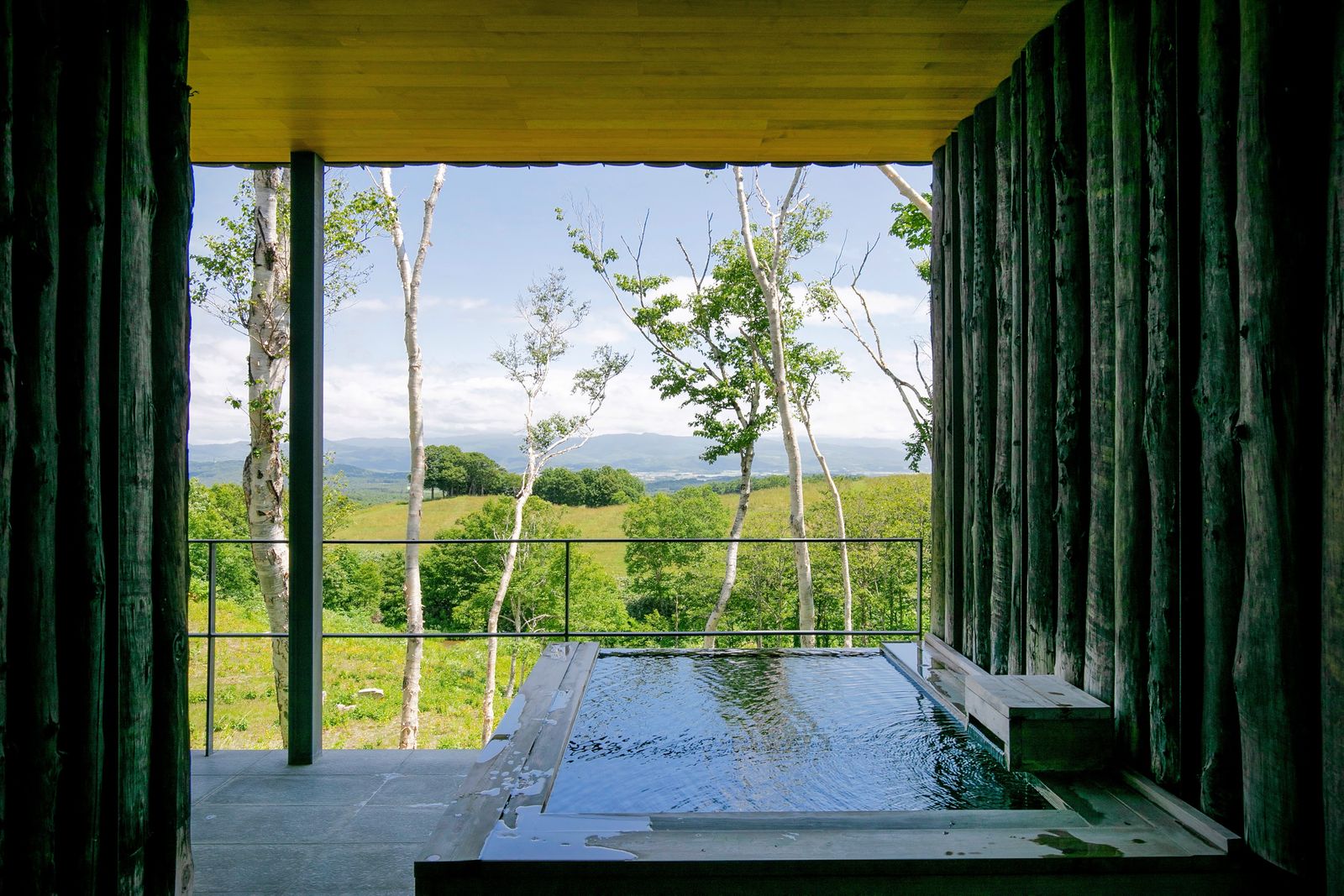It’s worth remembering that Hokkaido—Japan’s vast northernmost island and one of the least densely populated islands in the world—is not Tokyo. Gone are the crowds, lights, and service robots. In their place: vast open space, empty roads, and abundant nature. Hokkaido, then, is the perfect cultural palette cleanser from the all-out assault of the futurist capital. It can, however, just as easily overwhelm, meaning most visitors can get their fill simply by sticking to the “Central” region. Here, modernity rubs lightly up against traditional Japanese ryokans (or guesthouses) and an abundance of natural beauty. Come winter, this region—specifically Niseko—becomes an international ski resort, boasting world-class powder snow. In summer, however, the snow lifts like a serviette from a picnic, and Hokkaido is transformed with cinematic national parks, sprawling flower fields, and volcanic hot spots. Central Hokkaido alone has enough to keep any traveler busy, offering up the country’s mythic, zen roots with a forward-looking flair.
Jump to:
AccordionItemContainerButton
FAQ:
AccordionItemContainerButton
Hokkaido is closer than you might think, with two-hour flights connecting from Tokyo’s Haneda or Narita airports, both served by regular US routes, to Sapporo’s New Chitose Airport. Alternatively, connections through Seoul or Taipei can shave time and cost off the trip. Once you arrive at New Chitose, you’re already within striking distance of all the major Central region spots, and around a five-hour drive from the wilder, less-travelled eastern region.
AccordionItemContainerButton
This is Japan’s wild north, and it lacks the public transport heaven of hubs like Tokyo or Osaka. Though trains—including the Shinkansen “bullet” lines—link to the bigger towns, the real magic lies in the backroads and mountain routes. Flower fields, hidden onsen, and secluded lakes are best uncovered with a rental car. Kayak aggregates the best deals from major providers at New Chitose Airport and Sapporo, streamlining a process which—in a part of Japan that speaks little English—can be a godsend. Luckily, roads are quiet, impeccably maintained, and well signposted (often in English), making self-driving not only easy but a key part of any trip. In winter, opt for a 4×4 with snow tires, and be sure to request an ETC card upon pickup to streamline any expressway or toll payments.

Zaborin
Where to stay
Hokkaido’s hotel scene is quietly evolving—becoming less about ski lodges and muted rooms (as is often the case with Japanese hotels) and more about design-led retreats rooted in place, style, and grand narratives. Typically, most visitors will land in Sapporo city, and tucked away in an unassuming former Sapporo brewery building is the maximalist marvel of Hotel Sosei, the perfect place to begin exploring the region. One step into the lobby and it’s clear this place is hoping to redefine what Japanese luxury can be. A vast, imposing sculpture is matched by walls, shelves, and ceilings of frames, curios, and patterns. By night, the ancient copper beer kilns-inspired fireplace turns the bar into a cozy hideaway.
An easy 45-minute drive from New Chitose Airport to Shiraoi, Kai Poroto is as perfect an introduction to the true roots of the region as any. A lakeside retreat by Hoshino Resorts (who have a handful of innovative, playful stays across Japan), Kai Poroto expertly blends contemporary minimalism with traditional Ainu design—that of the indigenous Hokkaido people. Most striking here is the stylish lobby, full of white birch trunks literally bringing the outside in, and the signature structures of the lake-front onsen—blackened timber silhouettes, curving up to clouds, and inspired by traditional Ainu dwellings. The mood of the rooms is soft, subdued—all natural linens, and floor-to-ceiling windows that pull the mist-draped vista in each morning. As with all Japanese Ryokan stays, food is a set menu, private dining experience of the highest quality, utilizing seasonal produce and Ainu-inspired recipes. It’s a spellbinding experience, start to finish, and well worth the slight detour from the typical loop.
Over in the popular ski resort town of Niseko—sometimes called the “Aspen of Japan”—is the impossible elegance of Zaborin, a Ryokan experience like no other. As discreet as the Japanese character itself, this luxury take on the traditional guesthouse appears to be almost hidden within the birch forest that surrounds it. This stay is not so much a step back in time as a redefining of tradition. Each of its 15 villas comes complete with private indoor and open-air onsen fed by natural springs, while the multi-course dinner—equal parts kaiseki artistry and seasonal storytelling—is among the best in Japan. Design is quietly exquisite, and entirely intentional: clean lines, washi lighting, and panoramic forest views, all intended to slow you down.


AloJapan.com